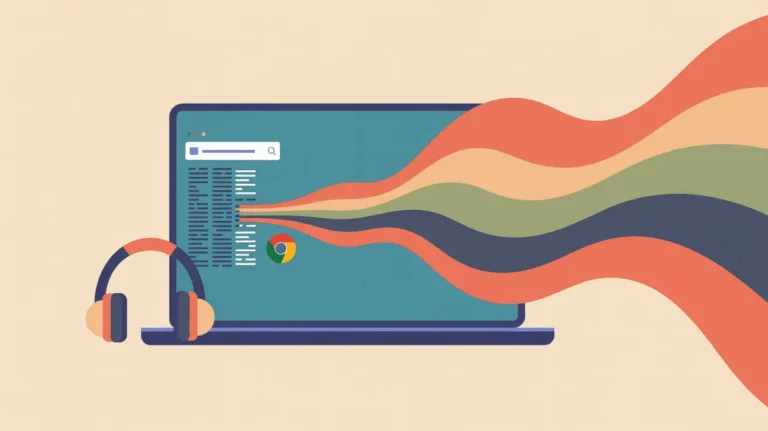7 Truths of Teaching with Adult Sensory Processing Disorder
If teaching is leaving you completely depleted at the end of the day, this could be one of the reasons why.
Adult sensory processing disorder presents extra challenges, for sure.
That's why today, I've got seven truths here to remind you that you aren't alone.

Free ADHD Organization Worksheets for ND Teachers
Offload your thoughts, plan your day, and gently reflect with these printables. Designed to add structure without the overwhelm.
Teaching with SPD: A Quiet Survival Guide
I knew it was time to take my sensory needs seriously when a tap on the shoulder startled me like no other.
It was a student trying to get my attention.
But my nervous system being on high alert for such a long time made this situation more frequent.
1. It’s not all in your head
Let’s start here: sensory processing disorder is real.
It's not that you’re dramatic or high-maintenance.
Unlike what people have likely told you.
It means your nervous system processes sights, sounds, textures, and smells differently.
For teachers, that can look like being fine one minute and then suddenly needing to take a break.
(In a supply closet because someone is drumming on a desk with a mechanical pencil. Again.)
You’re not fragile.
You’re navigating a job built for sensory endurance while your body has an entirely different user manual.
And that’s not a flaw.
2. Your classroom isn’t ‘just' loud
Most classrooms feel busy.
For you it's overstimulating in 25 directions. I know for me it felt like that.
No matter how many years I was at it, the sensory energy drain was a constant battle.
Common offenders for neurodivergent teachers:
- Fluorescent lights (if you hear the buzzing or just can't stand the light)
- Fire drills (you knew it was coming and it was still a major jolt)
- Marker squeaks, kids talking, lunchroom… aromas
- Overlapping conversations and ambient chaos
Even if nothing out of the ordinary is happening, your brain is filtering background input all day.
No wonder you're exhausted by 2 p.m.!

3. The symptoms aren’t always visible — even to you
You might not realize you're overloaded until you're at home later that evening.
Snapping at your family over something small.
Or you just can't process one more question, no matter how politely it's asked.
(Whew, goodness! They just don't stop, do they?)
SPD often flies under the radar in adults because we’ve learned to mask. But here are a few clues:
- Everyday sounds feel painful
- Textures or lights cause physical distress
- You leave social events feeling foggy or emotionally wiped
- You find yourself avoiding certain activities with no clear explanation
Naming it helps. You can’t support what you don’t acknowledge.
4. Coping with SPD as an Adult: Practical Tools That Help
You do not need to fix everything. You just need to find what softens things for you.
Build yourself a sensory toolkit:
- Noise-dampening earplugs (Loop or something similar)
- Soft clothing
- A visual boundary around your desk (floor tape works!)
- Scheduled quiet time for the class and for yourself
- Guided meditations on Insight Timer or YouTube
Don’t underestimate how much small steps can help to calm your system.
Take it from me: adults with sensory processing disorder can benefit from small, consistent steps.

5. SPD in the Workplace
You deserve accommodations. Period.
That doesn’t mean you should announce your diagnosis in a staff meeting.
(To be clear, I actually don't recommend that.)
But it does mean you can ask:
- For softer lighting
- To take breaks during loud assemblies if you get coverage
- For a quieter workspace
Come prepared to the discussion with cost-effective solutions and clear ties to supporting student outcomes.
One simple boundary-setting script to try with students.
“When multiple people talk to me at once, I can’t hear what anyone is saying. Please wait until I can focus on you.”
Of course, it's unfortunately not always possible to receive the accommodations you need.
You might not be in an environment where you feel comfortable asking.
Or the employer might not be able to fully meet the requests.
However, there are also some helpful self-accommodations you can try.
Read more about neurodivergent self-accommodations here.
6. Some things will always be hard.
Sensory processing isn’t something you “fix.” It doesn't mean you're doing something wrong, though.
SPD is something you manage — like working with a strong current instead of swimming against it.
You’ll have good days. And, you’ll have days you need looooooooooooooots of space.
That’s not failure. That’s just the way it is sometimes.
Teaching is inherently chaotic. Your job is to find as much calm as possible within the moving pieces.
Managing daily challenges is possible.

7. Connection and Online Resources
You’re not the only one. And you shouldn’t have to do this alone.
Find people who understand.
That could be a therapist, a support group, a quiet colleague, or online spaces like our Facebook group.
Share what works for you. Ask for help. Give yourself permission to change routines that aren’t working.
And if one day, the cleaning wipe scent is just too much? That’s okay.
You’re allowed to step away. To recalibrate. To try again tomorrow.
Key Takeaways
- Sensory Processing Disorder (SPD) is real, valid, and often misunderstood in adults
- Classrooms can trigger sensory overload in dozens of subtle ways
- Symptoms may not be obvious, even to you, but they are worth listening to
- Coping strategies should focus on what actually works for you, not what looks good on paper
- You have every right to ask for adjustments, with or without a formal diagnosis
- If you do ask for them, do so with your best judgment and have practical solutions ready where possible
- Progress isn’t linear — hard days don’t erase your efforts
- Finding connection and community is really important!
Join the Community
Want to connect with other like-minded educators?
We share ideas, ask for help, vent, and generally support each other.
Visit our Facebook group and take it one step at a time.
You've got this! ❤️
Found Something Helpful? I'd Be So Grateful If You'd Please Pin One of These Images!
It truly helps my blog reach more teachers like you. Thank you!










